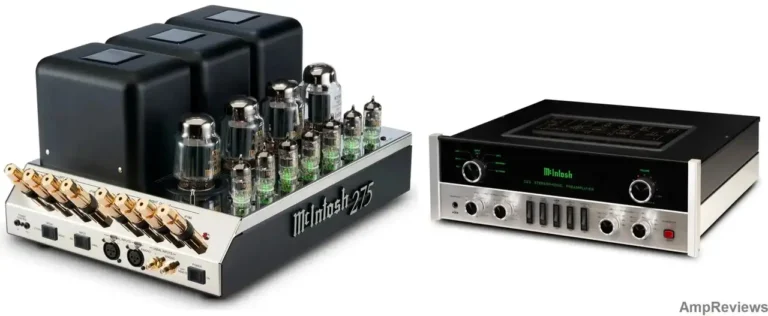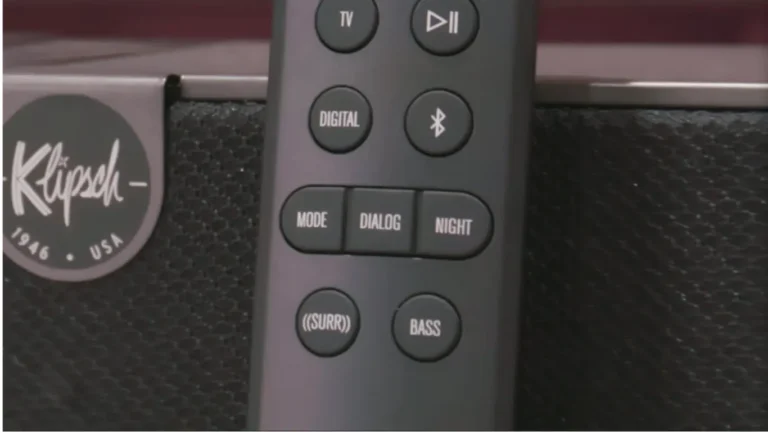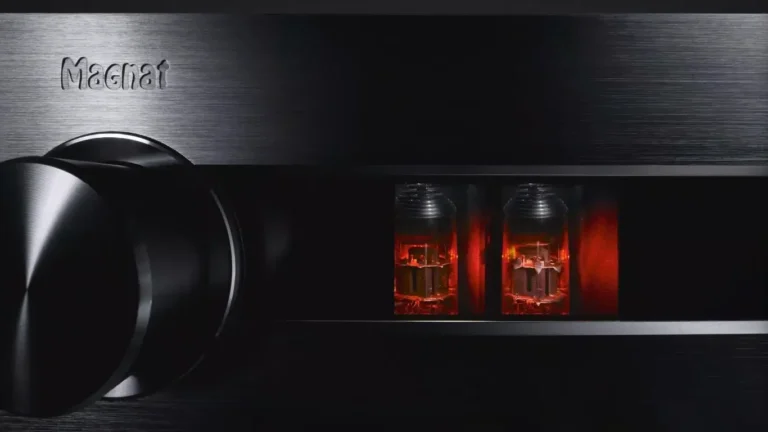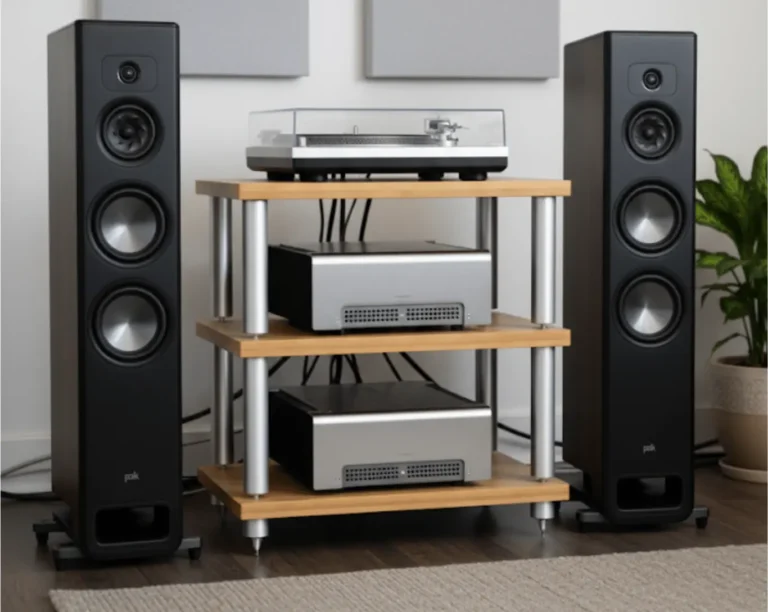Leak Stereo 230 Integrated Amplifier Review
Leak stereo 230: We felt the first breaths of fresh wind from the past when the famous British brand Leak, after a half-century hiatus, introduced a couple of new components—the Stereo 130 integrated amplifier and the CDT CD transport. This wasn’t just a nostalgic gesture; it felt like a revival as the designers skillfully blended vintage aesthetics with modern technology. The result was a product that paid homage to tradition while meeting the needs of today’s audio enthusiasts.
The pairing of Leak’s components with Wharfedale Linton speakers quickly became a benchmark for what a modern retro stereo system should look and sound like. It was more than a trend—it was a statement. Even now, every time I see this setup, it still sparks excitement. But after that initial wave of energy, things went quiet on the Leak front for a while. It left me wondering: was this revival just a fleeting moment? A passing breeze?
Check Out: Cayin CS-55A Integrated Amplifier Review
Thankfully, the answer came at one of the world’s most prestigious audio exhibitions. The Leak broke the silence with the introduction of the Leak Stereo 230, proving that their return wasn’t just a one-off—it was the start of something bigger. The storm they stirred up was just the beginning.

Authenticity and logic
Curious why the designers did not change anything. After all, outwardly, Leak Stereo 230 is a complete copy of its predecessor with an index of 130. Put them side by side, panel to panel – and you can play the game “find 5 differences”. The same aluminum front panel, framed in walnut veneer, features the same input and volume controls, as well as a similar tone block with a Direct button.
Of course, a careful look will reveal that there are many more inscriptions near the chosen entrances. And the inattentive will note that the Leak Stereo 230 has significantly increased in size in depth: now it is almost 42 cm against 28 for its predecessor.
Of course, we have our theory about this, which is based solely on spatial considerations. You can, for example, explain the lack of changes in appearance purely from the aesthetic side. After all, the design basis for the new Leak technology was their legendary amplifier from the 70s – the Leak Stereo 230, on which Jimi Hendrix himself listened to his records. And you can’t change anything; otherwise, all authenticity will be lost.
The second option also concerns aesthetics, but in a slightly different way: it was necessary to maintain the visual compatibility of the new Leak Stereo 230 and the CDT transport. This is a very logical scheme because many people immediately bought a set of amplifiers and a CD transport. And many will want to upgrade their 130 to a 230, so an amp with a new design would be a spoke in the wheel. But the brand is only accelerating.
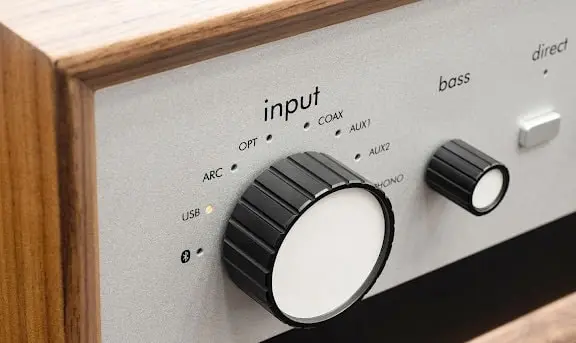
And thirdly, try to answer the question yourself, only honestly: what needs to be changed in Leak’s design to make it even better? Add indicator arrows? Paint in new colors? The appearance of Leak remains self-sufficient and recognizable. In addition, for the Leak Stereo 230, both body versions were retained, as in previous models: walnut veneer and without. Traditionally, you will have to pay a little extra for veneer, but even with this in mind, the 230 will remain in a reasonable price range.
Stronger, bigger, more modern
The bet on design was two years ago; this is obvious. This appearance will not become outdated and will not get boring. But if in this area, Leak is going to play one more game with the same cards, then there is only one direction left for development – circuitry.
Here, the engineers decided to break away in full. Perhaps they were the ones who came up with the initiative not to change anything on the exterior of the Leak Stereo 230 to expand their boundaries of what is permitted by saving on designers.
First, due to the modernization of the circuit, the power has almost doubled. Now, the torus is 270 VA, and at the output, we have 115 W / 4 Ohms or 75 W / 8 Ohms in class AB. Other changes in the analog part are not so dramatic but are still there. For example, attention was paid to the headphone amplifier – it received current feedback. The phono stage is built on low-noise JFETs and remains within the MM framework; for other analog sources, two inputs are left on RCA connectors and an output from the preamplifier.
The following radical changes affected the DAC: they didn’t do anything smart, but simply replaced it with a more high-end ES9038Q2M, which can already process both PCM up to 32 bit / 768 kHz and DSD up to 22.58 MHz (DSD512). To receive a digital signal, there are optics, coaxial, USB Type B, and another indispensable connector in our time, which no multifunctional amplifier can do without, no matter how it flirts with retro style – HDMI ARC.
But there is also the MQA format, which every self-respecting device should support. The Leak Stereo 230 is MQA compatible at the hardware level and on all digital inputs except HDMI. An official certification from Roon put an end to this issue. Moreover, even the Bluetooth module has been changed: now, it is 5.0 standard and supports the modern aptX LL protocol.
As a result, we get the most versatile amplifier with all the necessary functionality that may be needed in a modern audio system. This format has been quite common and popular for several years, but Leak was the first to pack the multimedia universe into a vintage case.
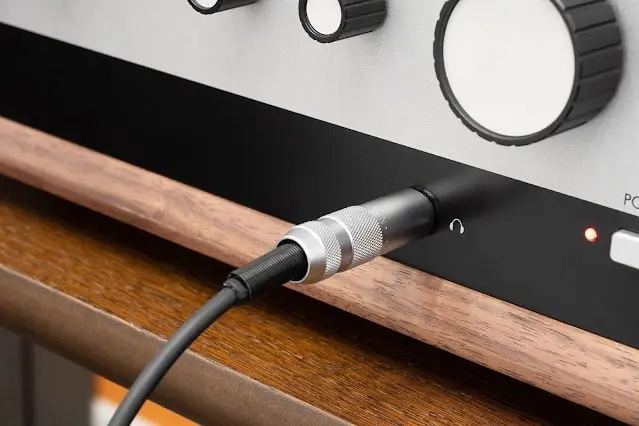
Sound Leak Stereo 230
Let’s not break tradition. Before us is a new sample of a modern stereo system in retro style: Wharfedale Linton and Leak Stereo 230. In principle, we have nothing against the previous sample, but progress is inexorable, and an upgrade is inevitable. For greater effect, let’s add a couple of streamers to the system: Cary Audio DMS-500 via analog inputs and Pro-Ject Stream Box S2 Ultra via digital ones. Let’s get started.
It should be noted right away that the increase in power relative to its predecessor benefited the Leak Stereo 230. The Lintons played more cheerfully, more lively, adding dynamics and control in the lower register. And the rest is what happened.
If you evaluate Leak Stereo 230 through the prism of different sources, then even with your eyes closed, you can tell which one is playing at the moment. Of course, the difference between the two is huge, and the amplifier demonstrates it well. However, his character did not succumb even to the monumental pressure of Cary and was easily read throughout the test.
Looking at all this vintage beauty, I want to include something close in spirit to the appearance of the amplifier and acoustics. But we will wait with this for now, and let’s start with a breathtaking classic: “Britten: Rejoice In The Lamb, Op.30 – For The Flowers Are Great Blessing”. A magnificent little thing performed by the Royal Choir from Cambridge to the accompaniment of an organ.
At first glance, there should be no difficulties – unless the bass depth is enough; otherwise, the meaning of the accompaniment is lost. The vocalist’s tenor cannot be lost in the thick of the hall’s reverb. The reverberations of the hall are needed so as not to lose scale. In general, typical tasks for listening to live classical music.
But for some reason, based on experience, fans of such recordings are one of the most fastidious in choosing components for a stereo system. What did the Leak Stereo 230 show? Here, his honesty and truthfulness come to the rescue: he faithfully conveys the tonality, does not mask details, and the potential in terms of bass notes is very good.
I would like a little more attention to minor details that are not lost against the background of the main games, but are slightly masked by the vintage orientation of the system. True, with Leak Stereo 230 you can significantly expand the choice of acoustics, which will have a certain character (an increase in power allows you to do this) – and thus correct the overall sound of the system. And as a universal option for a variety of genres, the tandem of Leak and Wharfedale is quite appropriate and pleasant to listen to.
Step aside – there is Björk with “Cosmogony”. I liked it right away. Of course, the track is uncomplicated, except that the bass part is not the simplest. But still, it was interesting to watch the play of her vocals against the backdrop of the post-apocalyptic absurdity of the motive. We can note the exact rendering of the scene, a good, to some extent, even unexpected, buildup of the bass speakers on the Linton.
Having once heard this track in triphonics, it is difficult to perceive it afterwards in systems where there is no dedicated bass link. And there were no special hopes, given the difference in acoustics and the genre. But Leak nevertheless pulled out this almost tectonic bass from the acoustics, for which he is an honest, frank plus.
Tests of electronic music passed without excesses. Something calm, like Nicolas Viana – “Everything” is served rhythmically; there are no problems with the atmosphere and the distribution of plans. And on more aggressive tracks, the Lintons’ resistance was more aesthetic than technical: the Leak Stereo 230 was in full command of the situation.
Well, in the end, so that the visual range and auditory perception enter into the maximum possible harmony, we will plunge into retro. Steve Winwood, Tears For Fears, Frank Sinatra, Van Morrison, AC/DC – you can continue the list yourself because almost all of us have favorites from those times, from that music. Here, it remains only to smile and nod your head to the beat because the atmosphere achieved with the help of the combined efforts of designers and engineers turned out to be truly mesmerizing.
The Leak Stereo 230 was delicate here. The prime British character helped him to work correctly with nuances and bass, the construction of the scene did not raise any questions, and only positive impressions remained from this part of the listening, without any “buts”. And if you take into account not only the sound but also the appearance, then you understand that it is from such components and systems that ordinary listening develops into something more – into a culture of sound.
Conclusion
Imagine if a stylized black and white display appeared on the front panel of the Leak, framed in walnut veneer, on the back panel an Ethernet connector, and a smartphone with the Leak Stream application. This would be a logical continuation of a series of components from the vintage line. But what will the public say? Of course, the Leak Stereo 230’s Roon certification closes that question in one fell swoop. But no one forbade us from fantasizing.
Important events are happening right before our eyes: legends become true, interconnects on the shelf are covered with dust, and amplifiers have become more functional than ever. A few years ago, such multimedia hubs were a universal recipe for unassuming listeners. And now it is a whole culture, the sound quality of which is now growing in proportion to functionality. And, no less important, you can join this culture for an adequate price: Leak Stereo 230 is a clear example of this.
Pros
Adequate price tag, sound, wide functionality, stylish appearance
Cons
At This Price None
Leak Stereo 230 – Customer Rating Breakdown
| Category | Rating (Out of 5) | Key Feedback |
|---|---|---|
| Sound Quality | ⭐⭐⭐⭐⭐ (4.8) | Warm, detailed, and dynamic sound; praised for musicality |
| Build Quality | ⭐⭐⭐⭐⭐ (4.7) | Premium walnut veneer, solid construction |
| Features | ⭐⭐⭐⭐ (4.3) | Good connectivity (phono, DAC, Bluetooth), but no digital inputs beyond optical |
| Ease of Use | ⭐⭐⭐⭐ (4.5) | Simple controls, though some want a remote with more functions |
| Value for Money | ⭐⭐⭐⭐ (4.4) | Pricier than some rivals, but justifies cost with performance |
| Overall Rating | ⭐⭐⭐⭐✨ (4.6/5) | Highly regarded for its analog warmth & vintage-modern blend |
Specifications Leak Stereo 230 Integrated
Type: Integrated amplifier
Power: 2 x 75 W (8 ohms); 2 x 115 W (4 ohms) class AB
Frequency range: 20-20000Hz (+\-0.3dB)
Distortion (THD): Less than 0.003% (1 kHz at 30 W/8 ohms)
DAC: ES9038Q2M
Maximum DAC resolution: 32bit/768kHz, DSD512
Bluetooth: version 5.0, aptX/aptX LL codecs
Inputs: 2xRCA, phono stage (MM), SPDIF (coaxial), SPDIF (optical), HDMI ARC, USB Type B
Outputs: pre-out, 6.3mm headphone out, SPDIF (coaxial), SPDIF (optical)
Additional interfaces: 12V trigger
Optional: MQA Full Decoder Certified Hardware Decoder, Roon Certified, Current Feedback Headphone Amplifier
Finishes: silver, walnut veneer
Weight: 11.1 kg (silver), 12.7 kg (walnut)
Dimensions (W x H x D): 300x115x414 (silver), 328x147x414 (walnut


